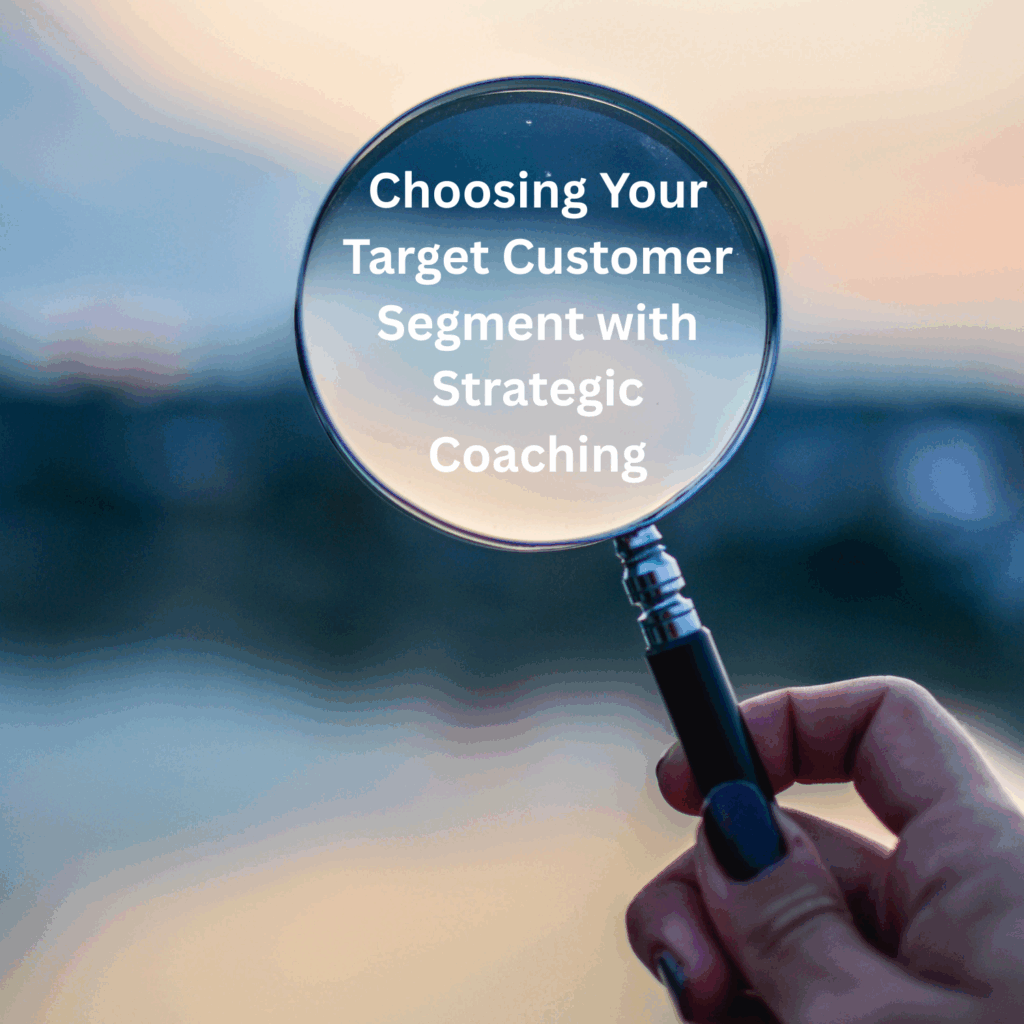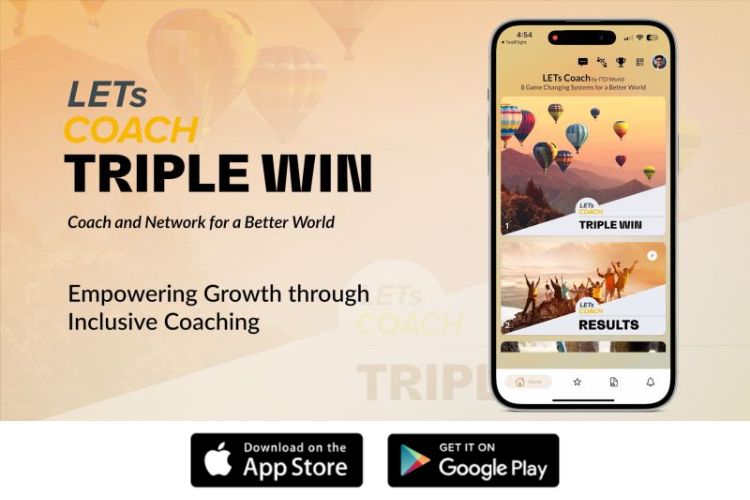The target customer segment conversation is an important element of strategic coaching. A breakthrough goal gives the organization a bold target to achieve, but vision without focus ends with going nowhere. It is like a spotlight with no lens that shines everywhere but illuminates nothing.
The question of which target customer segment deserves deep thought, time, and energy to explore and to come up with the answer. Getting the correct answer should not be relegated to the marketing realm. Knowing where to play to win is the foundation of how to win. This is a strategic choice that shapes the future business of the organization.
Leaders may consider resisting the temptation to serve everyone; after all, the logic that bigger markets promise bigger rewards is strong. Yet, segmentation done well possesses its own advantage. Organizations that narrow down and focus are likely to experience faster growth and perform better.
The breakthrough goal or vision, gives a bold milestone for leaders and organizations to aim for. But to bring about the breakthrough, the decision on where to play enables growth rather than diffusing effort.
|
Author: Aaron Ngui |
Two Tales of Why Target Customer Segment Matters
-
SaaS Refocus
A mid-sized software company is doing their best to sell their solution to small-medium enterprises (SMEs). The business development team is chasing all sorts of businesses, from hair salons to accounting firms, no stone is left unturned. Even so, acquisition costs are going up and no one is resonating with generic messaging.
After a strategic coaching intervention, the leadership realized their solutions that streamlines processes with collaborative tools were solving the sharpest pain points among digital creative agencies. By repositioning their narrative, tailoring onboarding, and adjusting their roadmap to serve this segment, acquisition costs dropped and customer retention increased.
-
Retail Pivot
A boutique fashion brand started targeting general women’s apparel. But margins were tight, and they faced stiff competition in a read ocean filled with generic clothing. By assessing their approach using strategic coaching, they arrived at a breakthrough when asked: Which customer cares most about sustainability and transparency?
Doing deep reflection and research, the brand pivoted towards eco-conscious urban professionals who were willing to pay a premium for such fashion items. The branding, sourcing, and pricing were realigned to this segment. Even though the market became narrower, profit margins and brand identity strengthened.
The two cases illustrate the power of choosing a target customer segment. Picking the correct one ensures organizations can sharpen value propositions, reduce wasted effort, and build a stronger competitive moat. Strategic coaching supports leaders with the space to recognize the truth that not all customers are profitable customers.
The sun’s rays do not burn until brought to a focus. – Alexander Graham Bell, inventor of the telephone
Common Pitfalls to Avoid in Target Customer Segment Efforts
-
Targeting everyone ends in targeting no one
Organizations serve no one well when they aim to serve everyone. This happens because the narrative is diluted, positioning becomes vague, and execution is not focused. Rather than being easy to remember, the brand ends up being background noise.
Focus is what builds traction. The foundation for growth is a well-defined segment.
-
Mixing up Total Addressable Market (TAM) with accessible market
On paper, a big market looks exciting. In reality, the entire market is realistically out of reach. A more realistic way to frame the question is to consider which slice of the market the organization can serve, defend, and grow in. When leaders and organizations concentrate their energies and efforts on what can be realistically captured, the time and resources poured in securing the opportunities pays off.
For example, the global fitness market may be worth billions. However, a new entrant may only be able to access young urban professionals in a single city. The discernment to distinguish between ambition and actionable focus is what keeps strategy grounded.
-
Insufficient testing in narrowing the target customer segment
Selecting a target segment is not a one-time-one-off decision. Many leaders may have fallen into the trap of committing prematurely. They do so without piloting initiatives to validate their assumptions. Small experiments with minimal viable products, campaigns, or services serve as tests to reveal how a segment responds.
For example, leaders embarking on a culture transformation campaign without the proper data from proven assessments risk the initiative from not reaching its full potential, Likewise, organizations may find themselves investing heavily in a customer group that is not unviable if they act without data-driven results.
Strategic coaching conversations help teams to pause, gather evidence, and adjust before resources are committed too deeply.
The successful warrior is the average man, with laser-like focus. – Bruce Lee
Strategic Coaching Questions to Identify the Target Customer Segment
Defining the correct segment doesn’t just come from the rows and columns of a spreadsheet. The answers emerge through reflection, dialogue, and testing assumptions. Strategic coaching provides the structure to ask sharper questions and push leaders beyond surface-level answers.
A principle in coaching is that “powerful questions release solutions“, so try using these questions to prompt deep thinking in the next coaching session:
-
Which customer group shows the strongest excitement for what is offered?
-
Who would be the one customer profile to focus on in the next 12 months, and why?
-
What data points or evidence suggest that this is a winning segment?
-
How does serving this segment enhance our value proposition?
-
What partnerships, channels, or innovations strengthens our reach?
These questions support leaders to go beyond vague ideas of “serving everyone” towards deliberately choosing who matters most. Answering the first one could show how early enthusiasm could signal where traction lies, while question two drives clarity and sharpens priorities.
The third question mitigates guesswork because strong signals from data prevent decisions based on instinct alone. The fourth one reframes trade-offs to opportunities for differentiation. And the final one keeps attention on practical enablers of success.
Just as with defining breakthrough goals, the right customer segment becomes a catalyst that gives strategy focus, energy, and momentum.
Read more: 60 Key Questions to Ask as a Mentor
Choose with Precision
Identifying the customer segment that drives growth is driven by clarity and discipline. Doing so requires leaders to pause, examine the evidence, and commit to where the organization can create the most distinctive value.
Strategic coaching supports this process by sharpening focus and surfacing blind spots. Concentrating on the one “must-win” customer segment may just turn out to be the base for sustained growth, loyalty, and a stronger competitive position.
Book a no-obligation complimentary consultation with ITD World today to get your strategy going!
Other resources you might be interested in:
- 5 Executive Coaching Goals Leaders Need for Success
- Executive Coaching: Building High-Performing Leaders
- Business Coaching: A Definitive Guide to Harnessing Its Power
- Coaching People Who Don’t Want to Be Coached



